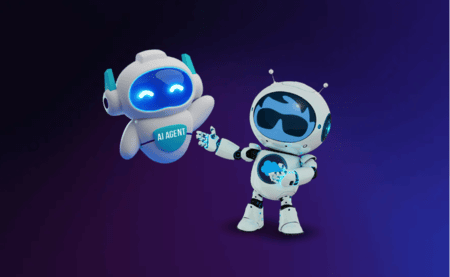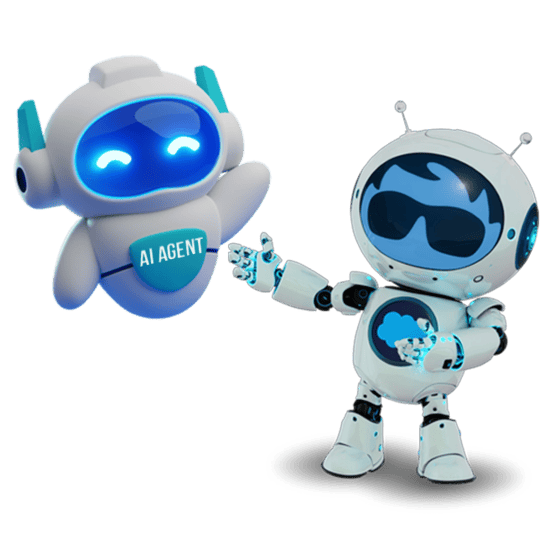
From Agents to Action: Inside Salesforce’s Agentforce and the Future of Autonomous AI in the Enterprise

By Teqfocus Team
17th April, 2025
Introduction
AI agents represent a paradigm shift from static automation to dynamic, goal‑driven systems. In an interview for the Teqfocus AI Transformation Series, Salesforce product leader Manjeet Singh described agents as systems that “understand preferences, pull data from multiple systems and adapt over time”. This article explores the technical components of AI agents, the evolution from chatbots to multi‑agent ecosystems and the challenges of memory, reasoning and orchestration.
Building Blocks of an AI Agent
According to Singh, effective agents comprise four layers:
- Model Layer: The reasoning engine (e.g., LLMs like GPT‑5, Claude, or domain‑specific models). Agents may use a combination of models—one for understanding context, another for reasoning and a third for generation.
- Instructions & Guardrails: Formalised prompts, policies and safety rules that define acceptable behaviour. Guardrails include content filters, rate limits, function‑signature restrictions and moral guidelines.
- Memory: Persistent storage to capture context from prior interactions. This may involve vector databases (e.g., FAISS, Pinecone) storing embeddings, relational databases for structured data, and caching for session context.
- Data & Integration Layer: Connectors to systems of record (CRM, ERP), APIs, knowledge bases and live web search. Tools like LangChain or LlamaIndex facilitate retrieval‑augmented generation.
Evolution: Bots → Copilots → Agents → Multi‑Agent Ecosystems
- Chatbots (2010s): Scripted or intent‑based systems handling simple queries.
- Copilots (early 2020s): Context‑aware assistants that provide suggestions but rely on humans for final decisions.
- Single Agents (mid 2020s): Autonomous systems capable of planning and executing tasks end‑to‑end. Examples include Agentforce skills for lead qualification or marketing campaign creation.
- Multi‑Agent Ecosystems (late 2020s onward): Networks of specialised agents collaborating to accomplish complex goals. For example, a marketing agent may coordinate with a finance agent and a compliance agent to launch a campaign.
Challenges & Research Directions
- Memory Management: Agents must decide what to remember and what to forget. Architectures inspired by cognitive science (fast vs. slow memory) help manage context. Techniques like summarisation, time‑weighted retention and retrieval‑based memory improve scalability.
- Reasoning & Planning: Agents need to break down complex tasks into sub‑goals. Tree‑of‑thought methods, reinforcement learning and chain‑of‑thought prompting enhance reasoning. Self‑critique loops enable agents to evaluate their own outputs.
- Tool Selection: Choosing the right API or data source requires meta‑reasoning. Agents use tool descriptions, cost estimations and performance metrics to decide which tool to call. Frameworks like AutoGen provide built‑in tool selection policies.
- Safety & Alignment: As autonomy increases, so does the risk of unintended behaviour. Techniques like constitutional AI, red‑teaming and human‑in‑the‑loop gating are critical. Deployment frameworks should include monitoring dashboards, drift detection and rollback mechanisms.
Use Cases Across Industries
- Healthcare: Agents can pre‑screen patients, coordinate appointments, suggest treatment options (for doctor approval) and manage follow‑up reminders.
- Insurance: Agents handle claims intake, detect potential fraud using anomaly detection and collaborate with human adjusters on complex cases.
- SaaS: Agents manage onboarding, upselling and retention. They monitor user behaviour, trigger in‑app guidance and coordinate marketing campaigns.
Conclusion
AI agents are poised to become the digital workforce of the coming decade. Their ability to reason, act and learn opens new possibilities for enterprise automation. By investing in modular architectures, safety frameworks and multi‑agent coordination, organisations can harness agents to deliver greater efficiency and innovation.
Frequently Asked Questions
Q: Are agents just advanced RPA bots?
No. RPA bots execute deterministic scripts. Agents combine reasoning, context, tool invocation and learning to handle complex tasks. They can adjust plans based on feedback, whereas RPA bots cannot.
Q: How do agents coordinate with one another?
Multi‑agent frameworks use message passing protocols. Each agent publishes capabilities and subscribes to tasks from others. A central orchestration layer assigns tasks and resolves conflicts.
Q: Can agents operate offline?
Most LLMs require cloud access. However, smaller open‑source models can be fine‑tuned and run on‑premises for specific use cases. Offline operation sacrifices access to fresh web data and large knowledge bases.
Q: What’s the difference between memory and context?
Context refers to the immediate conversational state. Memory spans multiple sessions, storing extracted facts, previous actions and user preferences. Memory persistence enables long‑term relationships.
Q: How do we measure success?
Define KPIs such as task completion rate, error rate, customer satisfaction and cost savings. Use A/B testing to compare agent performance against human workflows.
Are you ready to break down the silos and build a connected future?
Let’s start with a quick strategy session to map your interoperability journey.
